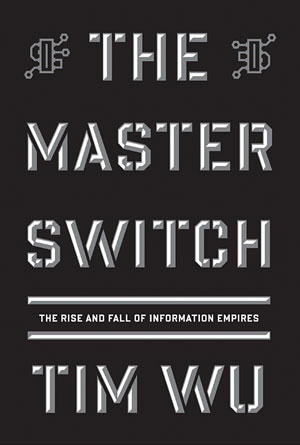
Over the twentieth century, most innovation theorists and historians became somewhat skeptical of the importance of creation stories like [Alexander] Bell's. These thinkers came to believe that the archetype of the heroic inventor had been over-credited in the search for a compelling narrative. As William Fisher puts it, "Like the romantic ideal of authorship, the image of the inventor has proved distressingly durable." These critics undeniably have a point: even the most startlingly inventions are usually arrived at, simultaneously, by two or more people. If that's true, how singular could the genius of the inventor really be?
There could not be a better example than the story of the telephone itself. On the very day that Alexander graham Bell was registering his invention, another man, Elisha Gray, was also at the patent office filing for the very same breakthrough [Note: Consequently many books have been dedicated to the question of who actually invented the telephone, and the majority seem to side against Bell, though of course to do so furnishes a revisionist the more interesting conclusion. More damning to bell is the fact that his telephone, in its specifications, is almost identical to the one described in Gray's patent. On the other hand, Bell was demonstrably first to have constructed a phone that was functional, not yet presentable enough to patent. A final bit of evidence against Bell: the testimony of a patent examiner, Zenas F. Wilbur, who admitted to accepting $100 bribe to show Gray's design to one of Alexander Bell's lawyers. (New York Times, May 22, 1886)]. The coincidence takes some of the luster off Bell's "eureka." And the more you examine the history, the worse it looks. In 1861, sixteen years before Bell, a German man named Johann Philip Reis presented a primitive telephone to the Physical Society of Frankfurt, claiming that "with the help of the galvanic current, [the inventor] is able to reproduce at a distance the tones of instruments and even, to a certain degree, the human voice." Germany has long considered Reis the telephone's inventor. Another man, a small-town Pennsylvania electrician named Daniel Drawbaugh, later claimed that by 1869 he had a working telephone in his house. He produced prototypes and seventy witnesses who testified that they had seen or heard his invention at that time. In litigation before the Supreme Court in 1888, three Justices concluded that "overwhelming evidence" proved that "Drawbaugh produced and exhibited in his shop, as early as 1869, an electrical instrument by which he transmitted speech. ..." [Note: Unfortunately for Drawbaugh, four justices found his testimony and that of his seventy witnesses not credible and dismissed the case. The dissenting Justices accused the majority of siding with Bell, essentially owing to his fame. "It is perfectly natural for the world to take the part of the man who has already achieved eminence. ... It is regarded as incredible that so great a discovery should have been made by the plain mechanic, and not by the eminent scientist and inventor."]
There was, it is fair to say, no single inventor of the telephone. And this reality suggests that what we call invention, while not easy, is simply what happens once a technology's development reaches the point where the next step becomes available to many people. By Bell's time, others had invented wires and the telegraph, had discovered electricity and the basic principles of acoustics. It lay to Bell to assemble the pieces: no mean feat, but not a superhuman one. In this sense, inventors are more like craftsmen than miracle workers.
Indeed the history of science is full of examples of what the writer Malcolm Gladwell terms "simultaneous discovery" -- so full that the phenomenon represents the norm rather than the exception. Few today know the name Alfred Russell Wallace, yet he wrote an article proposing the theory of natural selection in 1858, a year before Charles Darwin published The Origin of Species. Leibnitz and Newton developed calculus simultaneously. And in 1610 four others made the same lunar observations as Galileo.
Is the loner and outsider inventor, then, merely a figment of so much hype, with no particular significance? No, I would argue his significance is enormous; but not for the reasons usually imagined. The inventors we remember are significant not so much as inventors, but as founders of "disruptive" industries, ones that shake up the technological status quo. Through circumstances or luck, they are exactly at the right distance both to imagine the future and to create an independent industry to exploit it.
Let's focus, first, on the act of invention. The importance of the outsider here owes to his being at the right remove from the prevailing currents of thought about the problem at hand. That distance affords a perspective close enough to understand the problem, yet far enough for greater freedom of thought, freedom from, the cognitive distortion of what is as opposed to what could be. This innovative distance explains why so many of those who turn an industry upside down are outsiders, even outcasts.
To understand this point we need to grasp the difference between two types of innovation: "sustaining" and "disruptive," the distinction best described by innovation theorist Clayton Christensen. Sustaining innovations are improvements that make the product better, but do not threaten its market. The disruptive innovation, conversely, threatens to displace a product altogether. It is the difference between the electric typewriter, which improved on the typewriter, and the word processor, which supplanted it.
Wu, Timothy. The Master Switch. NY: Alfred A. Knoff, 2010: 18-20.
No comments:
Post a Comment